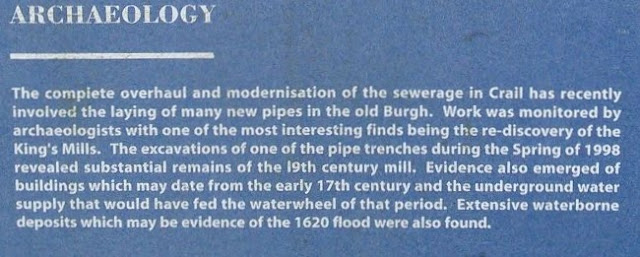Some people baked in tins, and others raised the bread in baskets. And there's always the question - to slash or not to slash? It's not immediately clear why you should at least consider slashing the tops of your loaves. But here is a good demonstration of the difference it makes.
The loaf on the left has been slashed on the way into the oven, and the loaf on the right has not been slashed. They both went in the same oven, and they both rose strongly when they hit the heat. As the bread swells in the oven, the tension on the surface increases until it gets to the point where something has to give. The slash on the left hand loaf gives it somewhere obvious to expand: open the cut a bit and there is immediately more room to stretch. The loaf on the right has to find its own weakest point and rip itself open along the line of least resistance. Very rustic of course, and it shows how unpredictably bread can behave in the oven. It will open up one way or the other, but slashing the bread reduces the unpredictability of how the bread will open up in the oven.
We had some young visitors today, from a school in Macclesfield, who came into the shepherd's hut to see what we were up to. I learned from one of them that Hovis was invented in Macclesfield, and I swapped the information that the thing that makes Hovis different from other bread is that it has lots of wheatgerm added - the very best bit of the grain, which is a "waste product" of roller milled white flour.
We were able to show the youngsters how different the same bread could look, depending on how you handle it. All three loaves in this picture are basically the same loaf, but one of them has been raised in a tin, and two have been raised in bannetons - wicker baskets. We showed them how the ridges of the basket left lines imprinted in the dough.
One of the bakers pointed out that the tin loaf had also tried to open itself up by ripping itself open along the edge of the tin. So even tin loaves might be candidates for slashing.
The other loaf we did today was a simple half and half loaf - half white and half Heron Corn Mill wholemeal wheat or spelt.
This is of course a lot lighter than a loaf using only wholemeal flour, but the Heron element should ensure a good flavour, and we added a few "bits" to make the texture a bit more interesting. Rye flakes, cracked wheat and linseeds are my regular choice here, though I have recently stocked up on wheat flakes and barley flakes as well. We only just got these loaves in the oven in the nick of time, because they were starting to hang over the side of the tins!

















